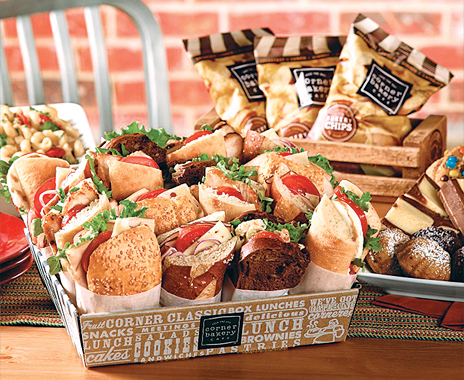The growth of catering has seen numerous limited-service restaurants expand their operations to capitalize on the incremental revenue, and an increasing slice is coming from the corporate business world.
But while catering to corporate customers gives operators a major business opportunity, it requires rethinking procedures that may work in the restaurant but don’t translate off-site.
“There’s purchasing potential for those customers lined up in your restaurant every day who have other occasions in life where they’re able to feed people—whether corporate or social,” says Erle Dardick, CEO of The Catering Institute and MonkeyMedia Software.
Though he dubs catering “the last frontier” in incremental revenue for limited-service restaurants, Dardick says few chains really understand it. They think of it more as a disruption when it should be treated like a separate business with a dedicated leader and single point of contact, separate ordering ecosystem, active sales team, and reliable delivery network. “Flawless execution comes down to operations,” he adds.
Catering accounts for roughly 20 percent of Corner Bakery Café’s overall business, with more than 90 percent of that coming from business-related catering, says Paul Hicks, senior vice president of operations services and new concept development. But grabbing that elusive business customer is something of a holy grail in catering circles, he says.
“How do I target that person who I know will be heading to their office or getting on an airplane to eventually end up at a meeting that will be catered? It’s a tough question,” he says. “Ultimately, we’re more interested in building a relationship with you so you can insert us in your time of need.”
The brand approaches catering much like a quick serve handles drive thru. While it’s not run as a separate business, each café is responsible for supporting its own catering operation, which Hicks says helps improve customer service. Employees are cross-trained in multiple positions to support catering if needed.
Dardick says properly trained staff can help with quality assurance, as they can identify problems and speak up prior to the food’s delivery. They can also actively pursue and engage potential catering consumers during downtime in the restaurant.
“Very few restaurants are strong in all three dayparts, but you’re still incurring labor cost during down times,” he says. “Training is key to get employees to engage in active selling, and compensation programs can help you.”
Cultivating strong sales relationships can also play a key part in successful menu development, as is the case for Jason’s Deli. The Texas-based chain has grown beyond its boxed lunch core to offer group trays, hot items like pasta, and even hot breakfast, largely due to customer feedback, says director of consumer insight Lee Greer, who oversees catering for the brand.
“Our local sales managers in the field are very close to corporate customers and are constantly feeding that information back to our R&D department,” Greer says. “They’ve told us what their needs are in meetings and the office environment, so we try to tailor our menus to that.”
Corner Bakery’s best-selling grilled panini is not offered on catering menus because it doesn’t travel well. Instead, the menu is more geared toward bulk offerings such as cold sandwich platters and salads, which companies appreciate both from a budget and flexibility standpoint, Hicks says.
Indeed, what works in the restaurant may not be successful off-premise, says Julia Gallo-Torres, senior foodservice analyst at market research firm Mintel.
“Catering foods in an office setting helps promote the brand, so it’s important that the foods be fresh and served at the appropriate temperatures,” she says. “A negative experience can negatively impact the brand, so caterers should carefully consider the types of foods requested and whether they can deliver on quality, taste, and experience.”
Dardick says that rather than seeing this as a limitation, brands can create craveable items from the same raw ingredients that aren’t available in restaurants, which will translate to more incremental sales.
“For years, Firehouse Subs said they were a hot sub brand and would never do cold subs,” he says. “Now, their catering is a cold sub program, but you can’t get cold subs in the restaurant. They understood they needed a different consumer solution that has all the qualities and same raw ingredients of their brand, just repurposed and repackaged.”
He adds that struggling chains like McDonald’s and Burger King could be holding themselves back from capitalizing on the growth of corporate catering by not offering something outside their core brand.
“Imagine if McDonald’s decided strategically to get into the catering business and it wasn’t about hamburgers. That’s an opportunity worth billions,” he says.
Business-to-business catering in particular relies heavily on word of mouth and referrals; being top of mind can be a matter of location. Jason’s Deli not only seeks out locations in business centers, but it also invests resources toward sales teams’ acquisition and cultivation of its “most profitable relationships,” Greer says.
For Corner Bakery, having a physical presence near business parks is only half the battle. It’s also up to cafés to reach out to the community—whether through chambers of commerce or business parks—and keep tabs on which companies are moving in or out.
“The networks that are out there that talk amongst themselves in terms of reliable catering are pretty tight—whether they’re part of a property managers group or involved in an executive administrators group—folks will toss your name around if you’re worthy of that referral,” Hicks says













